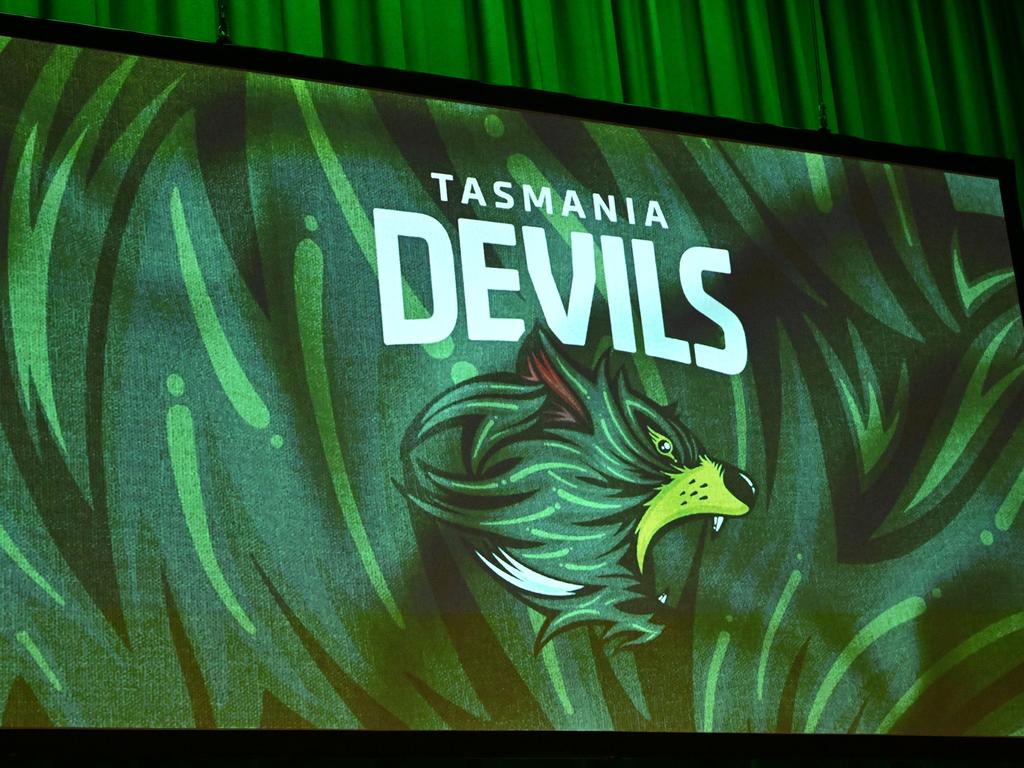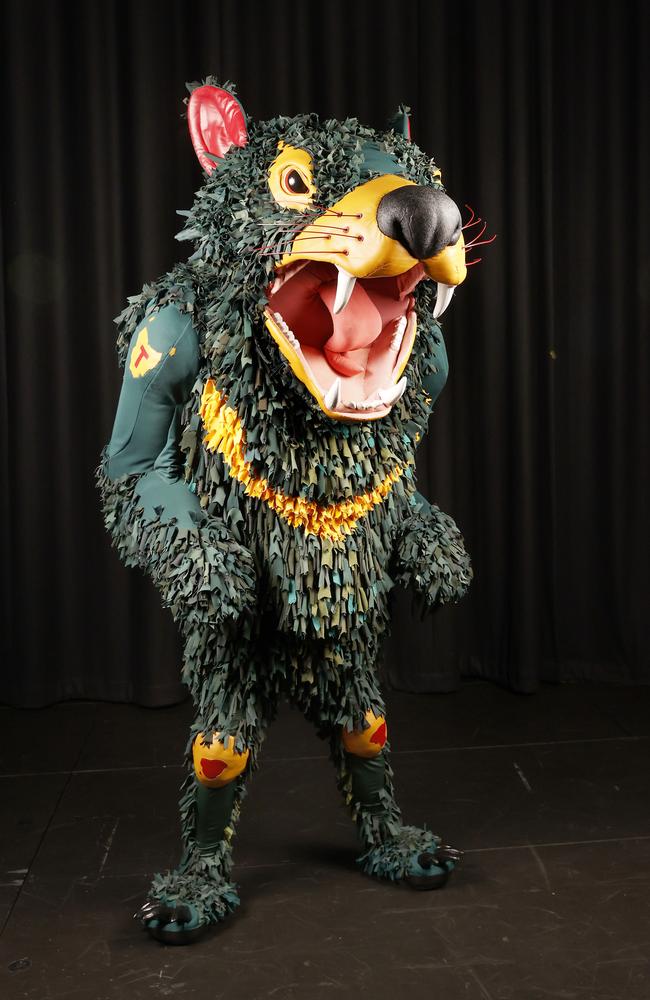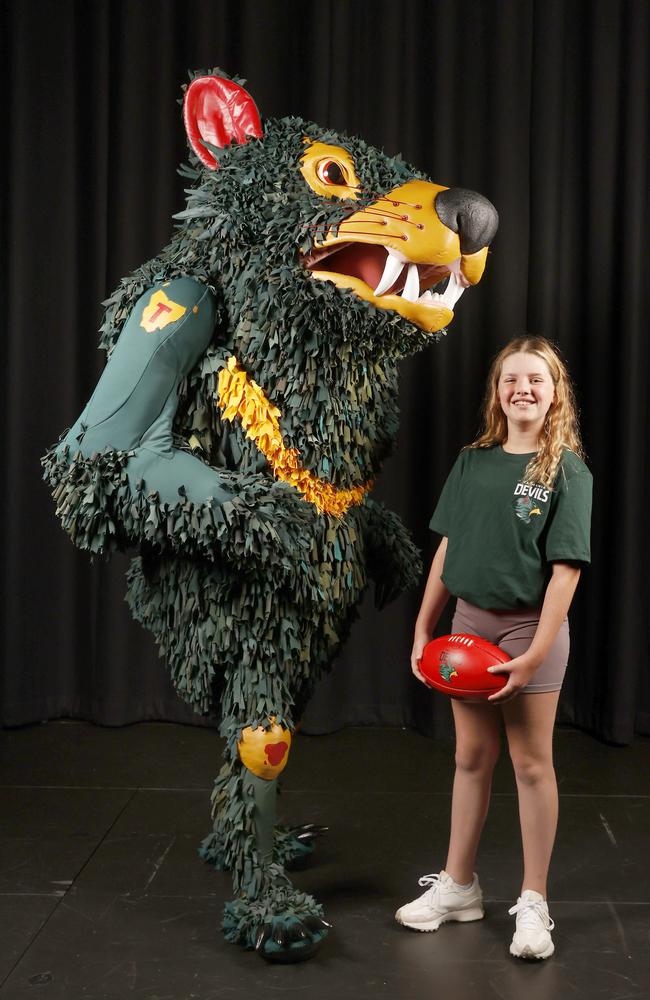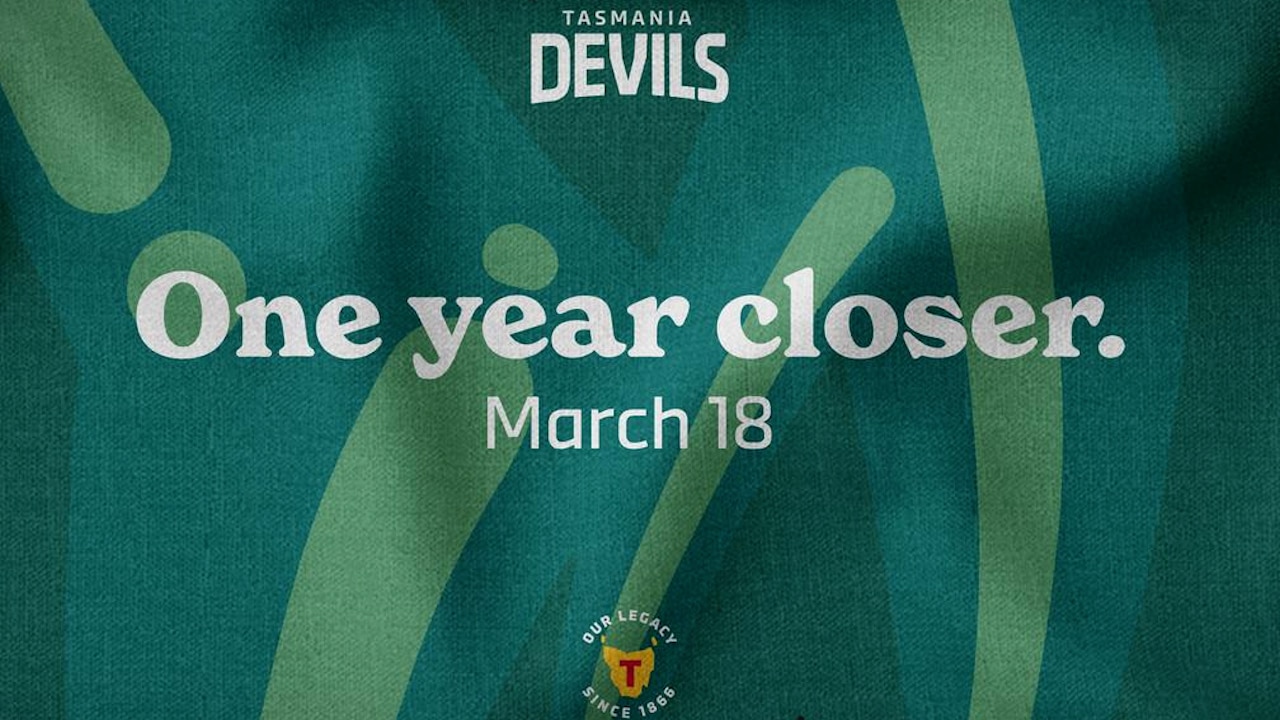AFL’s newest member club unveils the team mascot for Tassie Devils
Tasmania celebrated the first birthday of the Apple Isle’s very own AFL club by unveiling a valuable new recruit – a Tasmanian devil named Rum’un, team mascot for the state’s AFL entry

READING LEVEL: GREEN
Tasmania’s historic AFL mascot* had to be rough and tough enough, bloodied knees included, to represent Queenstown’s famous gravel oval. But it also had to look friendly enough not to scare all the little kids.
That was the challenging brief given to chief designer and footy greenhorn* Bryony Anderson, of Terrapin Puppet Theatre in Hobart.
She set out nine months ago to create Rum’un* – the mascot for the Tasmania Devils AFL team – and the fruits of her labour were unveiled on Tuesday.
Ms Anderson suspected Rum’un would be a smash hit, at least judging by the reaction of kids at Howrah Primary School, who got a sneak peek to test the reception last month.

“The signs were really good when the devil got mobbed for half an hour solid and left the room to a spontaneous chant (of), ‘Devil, devil’,” Ms Anderson said.
“I really hope that people just feel that it’s their devil.”
When the league’s newest club was confirmed, Terrapin Puppet Theatre approached the Tasmania Football Club with an offer to make Rum’un.
“(Terrapin) asked me if I would like to work on it and I said if we could include community and Palawa* playwright* Nathan Maynard involved in the character,” Ms Anderson said.
“We worked with Nathan and he wrote an origin* story for the character, which is epic: born with a football in its mouth in the mountains, of gravel and struggle, and that informed the character.
“Then I went out and spoke to teams on training grounds. I had a sketch and said, ‘What do you reckon?’
“They said it had to (kick butt), have bloody knees to represent the players from Queenstown on the gravel.
“Some wanted full-arm (tattoos) but some of the girls at Clarence modified that to the Tassie (tattoo), and not … too scary because some of the Auskick kids might get frightened, so (we decided to) make it cheeky instead.”

“So I went for cheeky with a little bit of, ‘Don’t mess with me’. They had heaps of ideas and I did my best to incorporate* them all.”
After gathering old school uniforms, Ms Anderson spent a week at New Norfolk with schoolkids, cutting the various uniforms into strips.
With community connection at the forefront, Tasmania chairman Grant O’Brien said it had resulted in some elements of fun that only children could be capable of creating.
“There was a tour done of the state to get to schools and get input on what their mascot should look like,” he said.
“They’ve been able to implement a good number of things that the kids wanted.
“The kids wanted, for instance, the mascot to be able to poo. Now, only kids could come up with that.
“So you can put things in the mouth of the mascot and out comes a ball.
“When you see the mascot, it’s covered in the school uniforms. These are things that we’re doing to try to make sure that we’ve got the right connection, that it reflects Tassie and that people feel part of it.
“All the kids that have been part of that will feel an ownership.”
WATCH THE VIDEO

POLL
GLOSSARY
- mascot: person, animal, or object used as a symbol and believed to bring good luck
- rum’un: the new mascot’s name comes from Tasmanian slang meaning a cheeky or mischievous person, usually a child
- greenhorn: someone without experience
- Palawa: Aboriginal Tasmanians
- playwright: someone who writes plays
- origin: the beginning of something, the starting point or place
- incorporate: to include something as part of something larger
EXTRA READING
Devil’s in the detail of Mark Knight AFL cartoon
QUICK QUIZ
- Which Tasmanian school got a sneak peek at the new mascot?
- What is Tasmania’s AFL team called?
- Where does the chief designer usually work?
- What is the mascot’s unusual name?
- What did Ms Anderson and students spend a week cutting into strips?
LISTEN TO THIS STORY
CLASSROOM ACTIVITIES
1. Design the banner
Design the banner for the Tasmania Devils team to run through at their first game. Your banner must include Rum’un and be inspired by information in the story about Queenstown as well as other information in the story.
Time: allow at least 40 minutes to complete this activity
Curriculum Links: English, Health and Physical Education, Visual Communication Design
2. Extension
Why are footy mascots so important? Create a mind map or write a report on this question.
Time: allow at least 20 minutes to complete this activity
Curriculum Links: English, Health and Physical Education
VCOP ACTIVITY
Exercise the body and the mind
Exercise is not only important for the body, but it’s a lot of fun as well. Let’s bring more exercise into classroom learning by creating a VCOP PE game.
You can add a VCOP challenge to pretty much any game, and it’s a great way to encourage the teacher to let the class play more games.
Here is an example to get you started, then you create one of your own.
VCOP dodgeball
The normal rules of dodgeball apply. Two teams throw soft balls at each other and if you get hit, you have to sit out. The team who knocks out all the players on the other team, wins.
VCOP challenge: when you get eliminated, collect a mini-whiteboard and a basic clause from the sidelines. Up-level the sentence (make it better) by adding VCOP. When you show the teacher your completed sentence, you can return to the game.
Play for a set amount of time and the team with the most players left on the court wins.
Support: use the “Up-Level It” card set – players have to complete one card from the set instead of completing all VCOP challenges.
What can you come up with?

